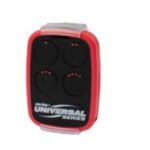Car touch screens have become a ubiquitous feature in modern vehicles, serving as the primary interface for navigation, entertainment, climate control, and various vehicle settings. Programming these touch screens involves a blend of hardware understanding and software development to create a seamless and intuitive user experience. This article delves into the essentials of car touch screen programming, focusing on the crucial aspects of calibration and touch event handling.
Understanding Touch Screen Calibration for Cars
Calibration is a fundamental step in ensuring the accuracy and responsiveness of any touch screen, and car touch screens are no exception. Touch screen calibration essentially maps the physical touch coordinates on the screen to the logical display coordinates. This process is critical because manufacturing variations and environmental factors can cause discrepancies between where a user physically touches the screen and where the system registers the touch.
Without proper calibration, tapping an icon might trigger an adjacent function, or the touch input might be inconsistent across the screen. For car touch screens, accuracy is paramount for driver safety and ease of use. Imagine trying to select a small navigation button while driving on a bumpy road – precise calibration makes this task significantly easier and safer.
Alt text: Calibration test displaying yellow markers on a car touch screen to verify touch point accuracy.
The calibration process typically involves touching specific points on the screen, often indicated by crosshairs or targets. The system then records the raw touch coordinates and compares them to the expected ideal coordinates. Based on this data, a transformation matrix or a set of parameters is calculated to correct future touch inputs. This ensures that when a user touches a particular location on the screen, the system correctly interprets the intended input, regardless of minor manufacturing inconsistencies or sensor drift over time.
Button Mapping and Touchscreen Interaction in Automotive Interfaces
Once the touch screen is calibrated, the next key aspect is button mapping and interaction. In car touch screen programming, “buttons” are not always physical buttons; they are often graphical elements on the display that users interact with. Mapping these virtual buttons involves defining touch zones on the screen and associating actions with touches within those zones.
When a user touches the screen, the system first determines if the touch event falls within a defined button area. If it does, the corresponding action is triggered. This could be anything from activating a radio station preset to opening the climate control menu or initiating a phone call. Efficient and accurate button mapping is crucial for creating a responsive and user-friendly car interface.
Consider the example of adjusting the volume using a touch screen interface. The programming needs to accurately detect swipes or taps on the volume control area and translate these gestures into volume adjustments. Similarly, selecting a navigation destination requires precise touch recognition within the on-screen keyboard or map interface.
In more advanced car touch screen systems, touch pressure might also be a factor. Some systems can differentiate between a light tap and a firm press, allowing for more nuanced interactions. This adds another layer of complexity to the programming but can enhance the user experience by providing more control options within the same screen space.
Ensuring Robust Touch Handling for Car Environments
Car environments present unique challenges for touch screen programming. Temperature variations, vibrations, and electrical noise can all affect touch screen performance. Robust programming needs to account for these factors to ensure reliable operation in all conditions.
For example, the provided code snippet from the original discussion highlights a potential issue in touch handling related to pressure sensitivity (p.z). Explicitly checking for a minimum touch pressure (MINPRESSURE) before processing touch coordinates can help filter out accidental touches or noise. This is particularly important in a car environment where vibrations and unintended hand movements are more likely.
bool bTouched = false;
if (p.z > MINPRESSURE && p.z < MAXPRESSURE) {
// Touch detected and within pressure range
int16_t nTmpX = p.x;
p.x = map(p.y, 120, 920, 0, 320);
p.y = map(nTmpX, 100, 900, 0, 240);
bTouched = true;
tft.fillRect(p.x - 1, p.y - 1, 2, 2, YELLOW); // DEBUG touch feedback
}Code snippet illustrating pressure-sensitive touch detection logic for improved robustness.
This code segment demonstrates a basic approach to incorporating pressure sensitivity. By ensuring that the detected touch pressure is within an acceptable range, the system can more reliably identify intentional user inputs and avoid misinterpreting noise or accidental screen contact as commands.
Conclusion: Programming Intuitive Car Touch Interfaces
Programming car touch screens is a multifaceted task that goes beyond simply displaying graphics. It involves meticulous calibration to ensure accuracy, thoughtful button mapping for intuitive interaction, and robust touch handling to guarantee reliability in demanding automotive environments. By focusing on these key aspects, developers can create car touch screen interfaces that are not only visually appealing but also safe, responsive, and user-friendly, enhancing the overall driving experience.
